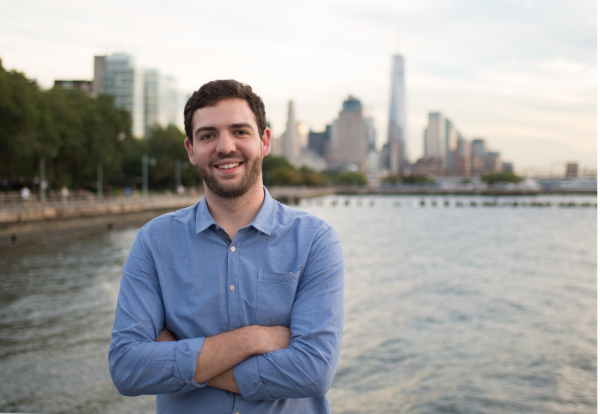5 Questions with Alum Asher Intebi

We talked to Asher Intebi [BArch '17] about his photography exhibition, Afterimage: Evocations Through Light(ness), his experience using the Visual Resources Collection's darkroom, life after graduation, and more. Discover his exciting work and how he views the relationship between architecture and photography in this brief interview.
How does your architecture background influence your photography? Conversely, how has film photography influenced your design ideology?
Both architecture and photography rely heavily on the designer taking a stance and developing techniques to transmit that message properly to the user/viewer. In this way, my background from architecture school set the foundation from which my ideology on photography has been built. Reciprocally, my photographs made me clarify my intentions from the earliest stage in the process—the shot—and have forced me to continually be critical throughout the development sequence to ensure those design intentions are being reinforced with every step. Photography and my explorations in the darkroom have, in turn, informed my architectural design process.
What made you decide to use an analog process? Did you discover anything unexpected when developing your photos using the VRC’s Darkroom?
As my abilities in Adobe Photoshop improved, I noticed my interest in photography substantially decrease. The limitless nature of editing software and digital photography creates a disconnect, in my mind, between the experience and the final image. Coupled with the inheritance of a 1970s Nikon FE from my grandfather, an avid photographer, I found that the restrictiveness of the darkroom processes and the brutal honesty of shooting on black and white film reinvigorated my love of the image. I discovered that, despite the additional burdens associated with shooting on film, the analog process trains the eye to more sensitively filter the abundance of meaning and poiesis that exists in our world.
How do you explore your personal experiences through photography and design? In what ways are these media similar or different?
As a result of the riskiness of the film and arduous sequence of development, the final image physically modifies the silver-halide crystals suspended within the paper fibers while also transforming our own memory of the subject. I’ve realized through this sequence of shooting, developing, and printing that I am able to manipulate the photographs to not only capture the physical image of the space but also to begin to communicate an intangible dimension of the experience—the emotion. To exploit this phenomenon, I use my camera and the darkroom to curate and retell my memories of the past, just as designers use architecture to sequence and shape our collective experiences of the present.
If visitors could walk away from the exhibition with one key takeaway, what would that be?
I hope that the images from this exhibition channel a sense of my non-physical experience from each shot to the viewers, in the same way that each print helps me re-experience what I felt looking through the viewfinder. Further, I would be honored if someone walked away from an image of mine with new inspiration: a moment of clarity about the content depicted, an architectural or spatial epiphany, a richer perception of the qualities of light, or a conviction to explore the darkroom and VRC amenities.
What’s next for you?
Since graduation, I moved to New York City and began working with Tod Williams Billie Tsien Architects on the Barack Obama Presidential Center. My photography work was most recently featured by Mâché, an artist collective featuring work from all over the world.
Afterimage: Evocations Through Light(ness), an exhibition of photographs by Asher Intebi, is on view through January 12, 2018 in the Visual Resources Collection, Sutton Hall 3.128.

